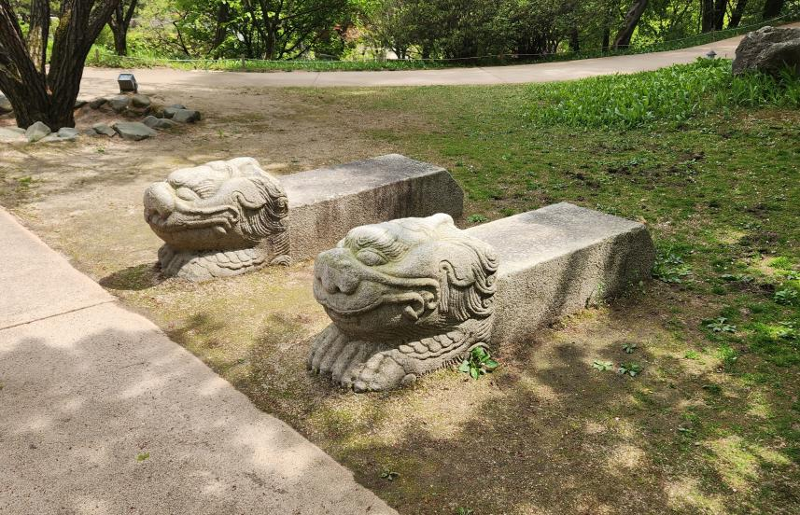
The Cultural Heritage Administration (CHA) has confirmed the finding of a pair of stone sculptures believed to have decorated the front part of a woldae, an elevated stage for royal ceremonies, at Gwanghwamun Gate in downtown Seoul. The two seosu, or an auspicious creature, are shown at their previous home of a garden at Hoam Museum of Art in Yongin, Gyeonggi-do Province. (CHA)
By Kim Seon Ah
The Cultural Heritage Administration (CHA) has verified two sculptures of the auspicious animal seosu that decorated the front of a woldae, an elevated stage used for royal ceremonies, at Gwanghwamun Gate, the main entrance of Gyeongbokgung Palace during the Joseon Dynasty (1392-1910), in central Seoul.
In a news release, CHA on Aug. 29 said, "The bereaved family of the late Samsung Group Chairman Lee Kun-hee recently donated these two seosu stone sculptures presumed to have decorated the woldae eodo (the king's path) at Gwanghwamun Gate."
A woldae is a wide platform used for royal rituals and placed in front of the royal palace or buildings where the king appeared and communicated with people during major events.
"The two stone sculptures donated this time have the same shape and size of the processed part and supported the upper part of small millstones placed on the cuff stone base, which CHA confirmed through excavation research," CHA added.
"Considering other sculptures like Haechi in Gwanghwamun and sculptures of auspicious animals at Geunjeongjeon Hall of Gyeongbokgung Palace, the donated sculptures possess similarities in style, number of horns, eyelashes, and the manner in which their manes are sculpted and treated and high value from academic, artistic and technical perspectives."
The sculptures were pivotal architectural features that symbolized Gwanghwamun's woldae. They went missing in 1923 after the Japanese colonial government demolished the woldae to build a tramway.
Both sculptures were later owned by the late former Samsung Group Chairman Lee Kun-hee. After his death in 2020, they were displayed at an outdoor garden of Hoam Museum of Art in Yongin, Gyeonggi-do Province.
CHA said, "We will host a commemorative event in October after the restoration of Gwanghwamun's woldae is complete to open it and the donated sculptures to the public."
sofiakim218@korea.kr